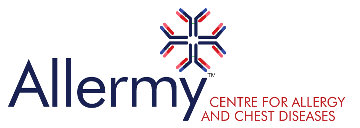ANAPHYLAXIS:
- WHAT IS ANAPHYLAXIS?
Anaphylaxis is a term every individual suffering from allergies, especially food, drug and insect allergy should be well aware of. On exposure to the allergen the patient can develop a fatal reaction due to exaggerated immune response of the body against the allergen, sometimes leading to death with or without treatment. - COMMON ALLERGENS:
The common allergens causing anaphylaxis are food substancesand food additives. Although, any allergenic food may lead to it, the most commonly encountered are due to allergies to peanut, seafood, egg and milk and to insects like ants, wasp and bees. Drugs like penicillin and related groups such as cephalosporin, contrast media (used in radiological scans like CT, MRI etc) and lignocaine (commonly used local and epidural anesthetic) are the common agents causing anaphylactic events. - MANIFESTATION OF ANAPHYLAXIS
A previous exposure to these agents might not be symptomatic but is said to cause sensitization (i.e. priming of the immune system to mount a full blown response on subsequent exposure to the same or similar allergen). On exposure to the allergen by way of ingestion, injection and rarely even by inhalation of the smell of the allergenic food substance, the patient develops the symptomatology of anaphylaxis. The most common being rash, feeling of tightness in the neck, swelling and breathlessness. It may progress further to abdominal pain, vomiting, headache, flushing and drowsiness. As the episode worsens it leads to circulatory compromise with hypotension and respiratory distress. It is reported that at least 10% to 15 % of anaphylaxis patients may not survive a severe attack and almost in the same number there may be no rash at all. This is the reason that more often than not, cases of sudden death in young adults may be due to undiagnosed anaphylaxis. - YOUR BODY DURING ANAPHYLAXIS: The body itself mounts a compensatory response to the allergen by secreting adrenaline (fight or flight hormone). The body stores of adrenaline may not be enough to counter the attack; hence administration of adrenaline externally is warranted.
- DIAGNOSING ANAPHYLAXIS: The diagnosis of anaphylaxis is strictly clinical but in cases of inject able allergen only, one can do a tryptase level provided the blood was collected within 6 hours of the attack. Due to the risks and fatalities associated with the above allergies it is imperative that one should consult an allergist at the earliest chance to identify the allergen, preferably, through a skin prick test and to start the suitable treatment.
- TREATMENT OF ANAPHYLAXIS: The best, first, safest and most important treatment during an attack is adrenaline (Epipen) – given strictly intramuscular. If given subcutaneous the response will be slow and if intravenous, it can be fatal. Adrenaline should be given in the lateral thigh. It can be repeated every 5 to 15 minutes to a maximum of three doses. It should ideally be given by a prefilled syringe (epipen) or freshly prepared from an ampoule. Other treatment modalities given during an attack such as oxygen, fluids, steroids, antihistamine and Ranitidine are merely supportive. Once the patient improves, he should be observed for 8 to 24 hours for the possibility of a second or diurnal attack.
- Measures to be taken after an episode of anaphylaxis
This consists of avoidance of the allergen and desensitization for life saving drugs. Venom immunotherapy for insects and sublingual immunotherapy for foods such as milk, eggs and peanuts is a viable and promising option that can possibly render a permanent cure. The patient should realize that it is a potentially fatal condition which can be prevented by early diagnosis and prompt treatment.

